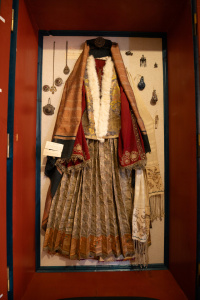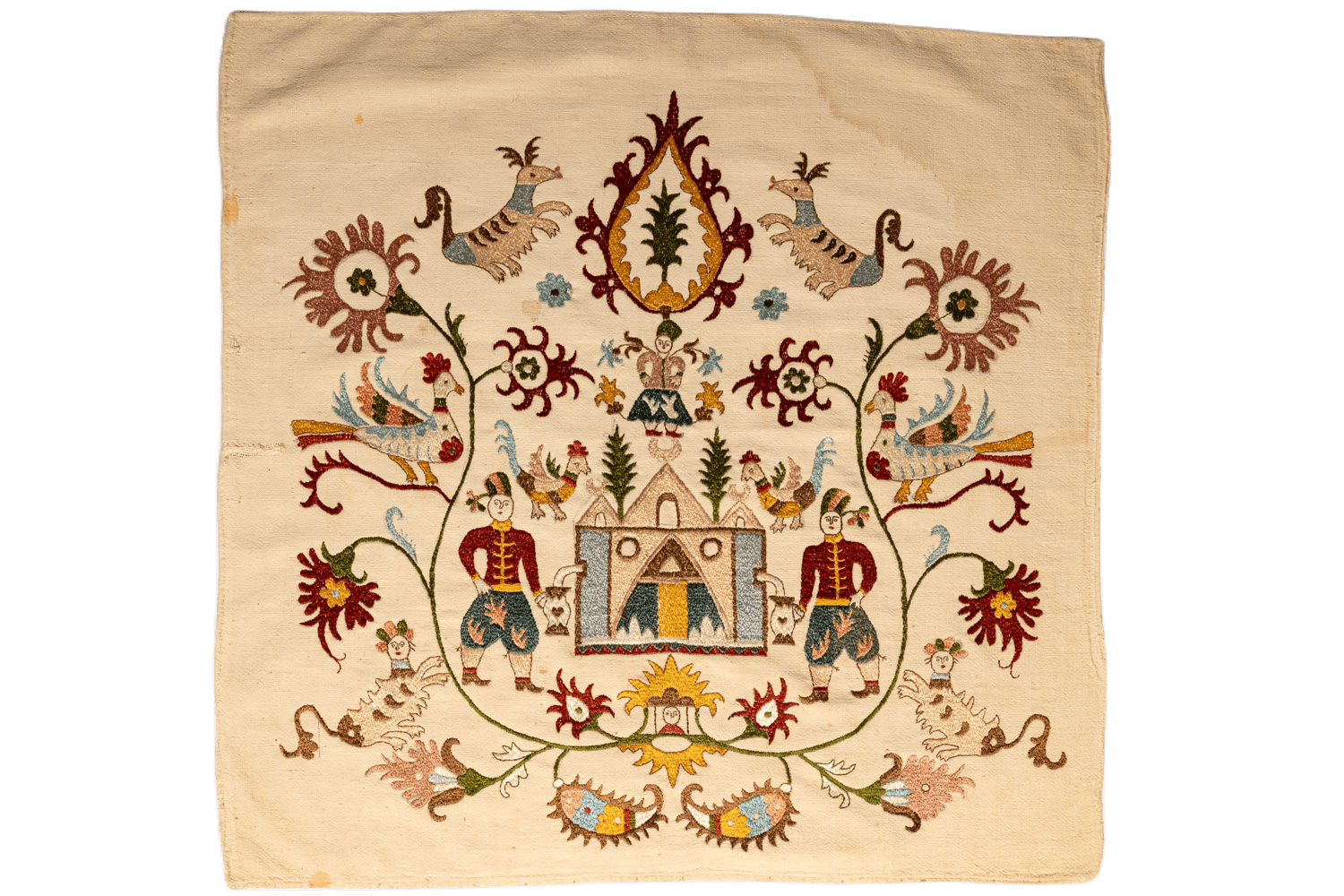Skyrian embroideries and weavings, along with the local traditional costumes, hold a special place in the Museum's collections.

Skyrian costumes
The Museum owns a large number of complete Skyrian costumes as well as separate parts of clothing.
The costumes show the caste status of the inhabitants of the island, as each caste (the ruling class or Megalostratites, the upper class, the seafarers, the shepherds, the farmers, the workers, the fishermen) had its own sartorial elements which, in older times, indicated the class status of each Skyrian.
The luxurious wedding dresses –considered one of the most precious in Greece- and the shepherd's costume hold a special place. The collection also contains the Carnival costumes, with the "Yeros" costume –the symbol of the Skyrian Carnival- being the most prominent one.
Aside from the Skyrian traditional costumes in the show-cases, the Museum also has a large collection of other traditional costumes from around Greece.

Skyrian embroideries
Skyrian embroideries, which hold a separate place in the Museum's collection, are divided into categories, such as the "kokkinokendita" (red embroideries), the "asprokendita" (white embroideries), the "aratzideles" (shirt lacing), the "oath" embroideries and the "grafta" (written embroideries).
The most impressive Skyrian embroideries are the "grafta". Unlike the rest (white, gold or red embroideries) which can be found in other areas of Greece as well, the "grafta" evolved mostly in Skyros. What is interesting about them is the richness of their motif's topics, as well as their technique and beautiful colours.
During the post-war period, the motifs of these Skyrian embroideries became well known around Greece and were used by decorators and advertisers as logos, in shop signs, on book covers, on record covers, on plates and other ceramics not only for decorative reasons, but also as symbols of the quality and fine taste of advertised subjects.
Weavings
This collection contains all raditional Skyrian weavings (carpets, head covers, table cloths, towels etc), which have a fine and aristocratic look.
There is also a large number of weavings from many other areas of Greece and also European and Asian countries, which were brought to the island during the past centuries and many of them have become part of the Skyrian culture.